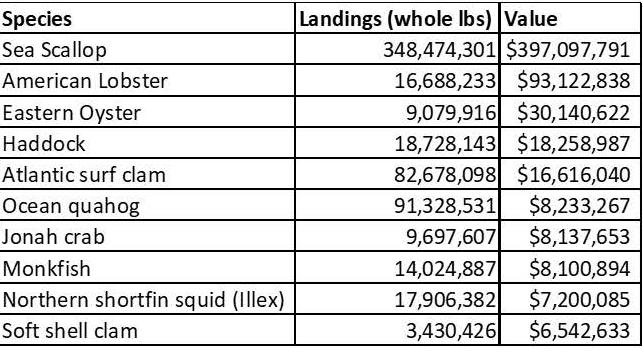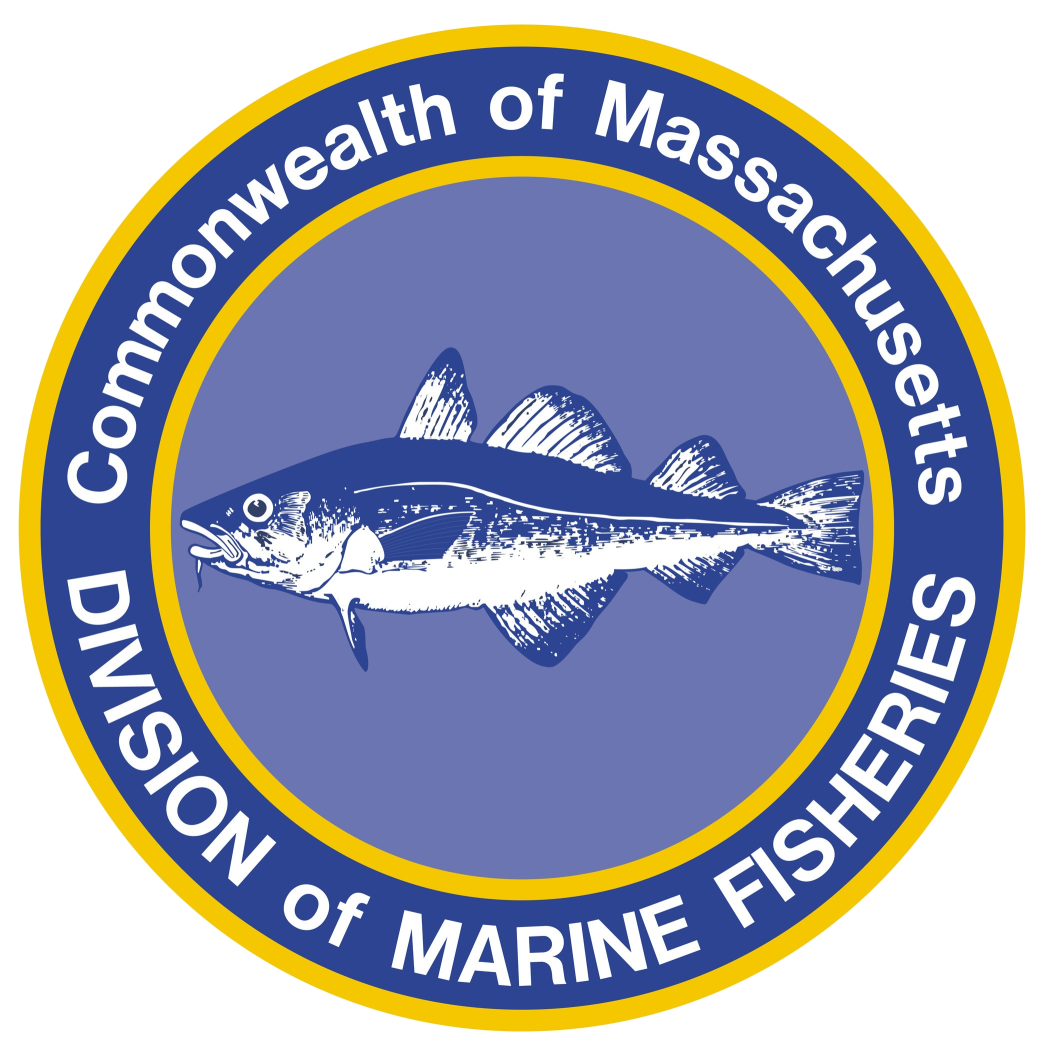- Division of Marine Fisheries

The seafood industry has been important culturally and economically to Massachusetts for centuries. In 2019, Massachusetts remained one of the top states for commercial seafood landings and value in the country, according to NOAA Fisheries’ recently released Fisheries of the United States, 2019 Report (https://bit.ly/3xj0Dcl). Massachusetts was second to Alaska in ex-vessel value of landings in 2019 at $679.3 million. For the 20th year in a row, New Bedford was the highest valued U.S. port with a total ex-vessel landings value of $451 million. New Bedford’s consistently high landings value is being driven by high-value sea scallop landings. Massachusetts ranks second in the country in lobster landings, behind Maine.
Although the value of Massachusetts landings is being driven by the high-value sea scallop and lobster fisheries, a closer look at the top 10 species landed in Massachusetts by ex-vessel value (see table) shows a variety of shellfish, invertebrates, and finfish. Most of these top species are landed year-round. There are also several species landed seasonally when they migrate into our waters, including bluefin tuna, black sea bass, scup, striped bass, and fluke.
The top two species harvested in state waters in 2019, in terms of value, were lobster and oysters. According to data reported by commercial harvesters, 9.4 million pounds of the total 16.7 million pounds of lobster and oyster landed in 2019 were harvested in state waters. This equates to an approximate ex-vessel value of $53.7 million for lobster harvested in state waters. The top five Massachusetts ports for lobster landings in 2019 were Gloucester, New Bedford, Rockport, Plymouth, and Marshfield. Massachusetts issues just over 1,000 Coastal Lobster permits annually and on average about 700 of these permits are fished in a given year.
Eastern oyster landings in Massachusetts have increased significantly over the past ten years. The ex-vessel value of oysters landed has more than tripled from $9.1 million in 2010 to $30.1 million in 2019. The majority of oyster landings in Massachusetts, with an approximate ex-vessel value of $29 million, come from private aquaculture sites. DMF issued permits to 395 private aquaculture license site holders across nearly 30 coastal municipalities in 2019. More detailed information on license sites and landings by municipality can be found in the 2019 DMF Annual Report.
Detailed final landings data are not yet available nationally or in Massachusetts to fully evaluate the impact the COVID-19 pandemic had on the seafood industry but as reported in the 3rd & 4th Quarter 2020 DMF News, it is clear that some segments of the seafood industry were significantly impacted. Seafood that is primarily sold in restaurants, like oysters, suffered the biggest losses. Regardless of 2020 impacts due to COVID-19, seafood remains important culturally and economically in Massachusetts. In fact, many seafood dealers have reported a higher demand for local seafood during the pandemic. It will be several months before 2020 data are available and analyzed to see how the shifting consumer demand and COVID-19 impacts combined to impact seafood landings and value across species.
By Story Reed, Permitting & Statistics Program Manager
